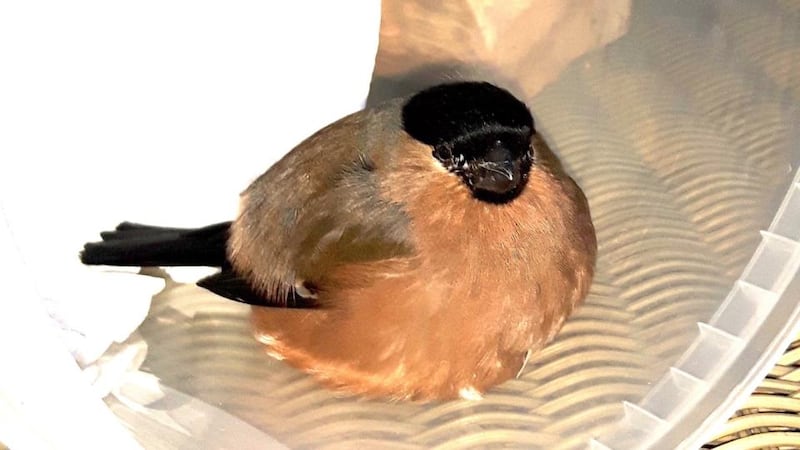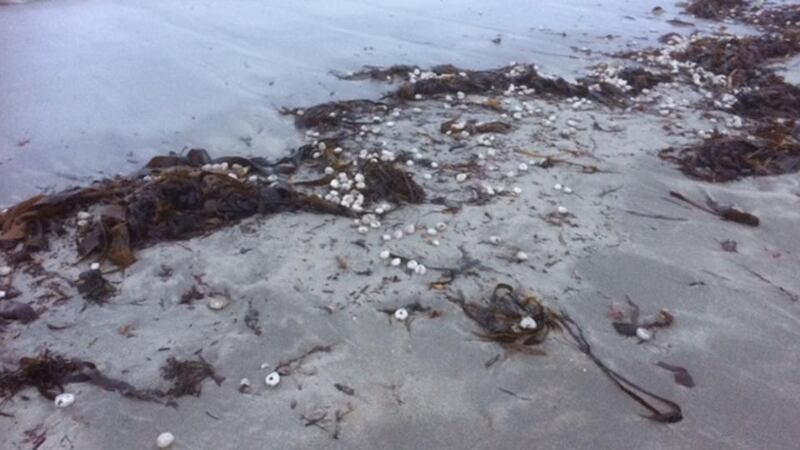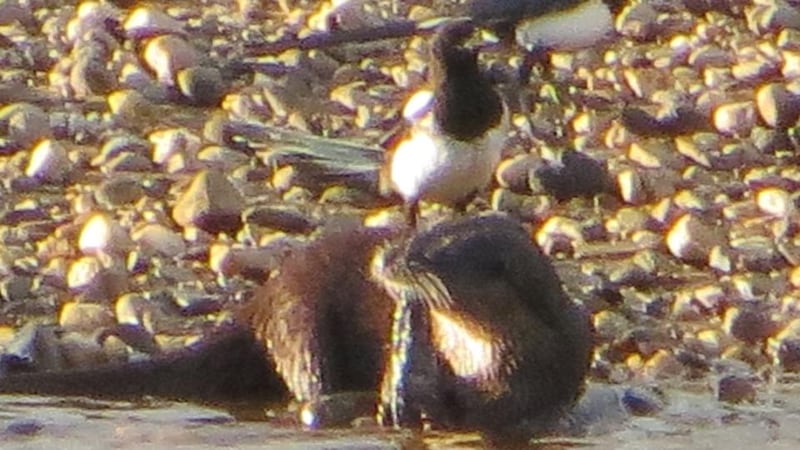Can you identify this bone found on a beach in Grundafjord, in Iceland, last summer? – Mary Patterson, Foxford, Co Mayo
It is the pelvic bone of a cormorant.

This bird flew into our window and died. Was it a bullfinch? It has such beautiful colouring. – Lindsay Gillespie, Ballyhide, Co Carlow
A bullfinch, indeed.

In mid-January hundreds, probably thousands, of sea urchins washed up on the strand at Mullaghmore. Is this because of the recent storms? – Heather Wood, Cliffoney, Co Sligo
Yes. Sea urchins live on the sea floor, among seaweed, and cling to rocks. They get dislodged by strong waves.

This photograph of an otter dining on a lamprey, and being watched by a pair of magpies, was taken on the River Foyle below Lifford Bridge. – Albert Johnston, Ramelton, Co Donegal
When one of our laying hens disappeared we feared that she was "clocking". We assumed that no hatching would occur because of the time of year and the extremely cold spell in January. But during the first week of February she emerged from the undergrowth with an increasing number of chicks each day, until the count came to 11. – Dermot Kelly, Milford, Co Armagh
I heard unusual birdsong come from the high branches of a mountain ash, then move first to a Bramley and then to a maple. It reminded me of an old-fashioned telephone, tinkling bell-like, twice on the same note. It sounded like the song of a small bird. – Una Duffy, Sallins, Co Kildare
A few birds mimic mechanical sounds: the blackbird, the starling, the song thrush and, reportedly, mimicking the sound of an old-fashioned phone, the greenfinch.
Ethna Viney welcomes observations and photographs at Thallabawn, Louisburgh, Co Mayo, F28 F978, or by email at viney@anu.ie. Please include a postal address









